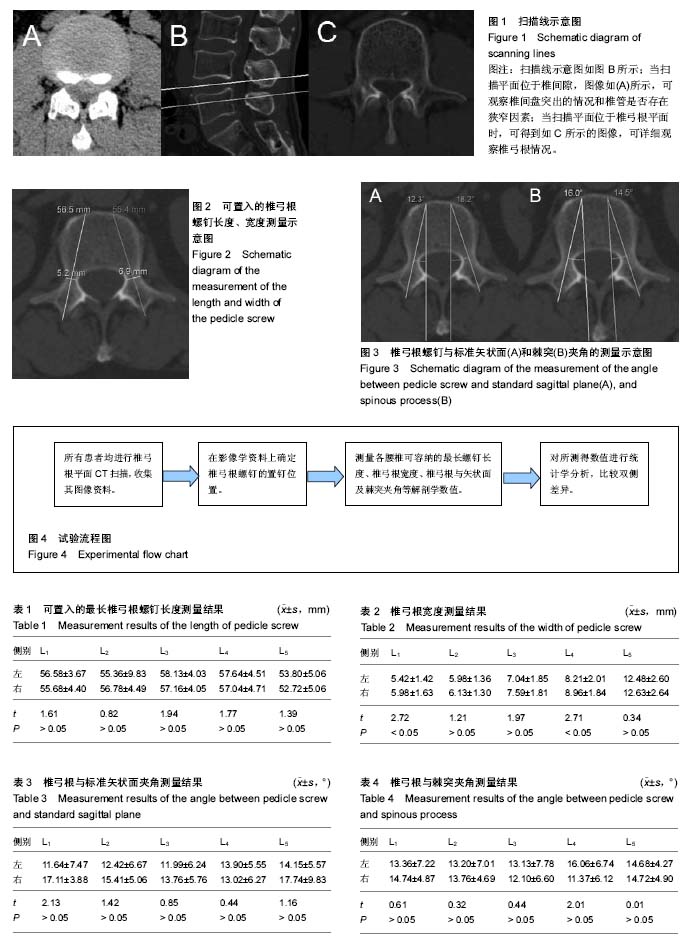| [1] Sarlak AY, Tosun B, Atmaca H, et al. Evaluation of thoracic pedicle screw placement in adolescent idiopathic scoliosis. Eur Spine J. 2009; 18(12):1892-1897.[2] Hicks JM, Singla A, Shen FH, et al.Complications of pedicle screw fixation in seoliosis surgery: a systematic review.Spine (Phila Pa 1976). 2010;35(11):E465-E470.[3] Gelalis ID, Paschos NK, Pakos EE, et al. Accuracy of pedicle screw placement: a systematic review of prospective in vivo studies comparing free hand, fluoroscopy guidance and navigation techniques. Eur Spine J. 2012; 21(2): 247-255.[4] 庄彦, 曹晓建. 椎弓根外侧壁破坏对脊柱椎弓根钉内固定生物力学强度的影响[J]. 中国修复重建外科杂志, 2015, 29(2): 189-193.[5] Stauff MP, Freedman BA, Kim JH, et al. The effect of pedicle screw redirection after lateral wall breach – a biomechanical study using human lumbar vertebrae. Spine J.2014;14: 98-103.[6] Goda Y, Higashino K, Toki S, et al. The pullout strength of pedicle screws following redirection after lateral wall breach or end-plate breach. Spine. 2016;41(15): 1218-1223.[7] Sarwahi V, Wendolowski SF, Gecelter RC, et al. Are we underestimating the significance of pedicle screw misplacement. Spine. 2016;41(9): E548-555.[8] Parker SL, McGirt MJ, Farber SH, et al. Accuracy of free-hand pedicle screws in the thoracic and lumbar spine: analysis of 6816 consecutive screws. Neurosurgery. 2011;68(1): 170-178.[9] Karapinar L, Erel N, Ozturk H, et al. Pedicle screw placement with a free hand technique in thoracolumbar spine: is it safe? J Spinal Disord Tech. 2008;21(1): 63-67.[10] Larson AN, Polly DW, Jr, Guidera KJ, et al. The accuracy of navigation and 3D image-guided placement for the placement of pedicle screws in congenital spine deformity. J Pediatr Orthop. 2012; 6:23-29.[11] 黄彦,吕浩然,杨进顺,等. 术中三维导航引导下脊柱侧凸的椎弓根螺钉置入研究[J]. 中国矫形外科杂志, 2012, 20(24): 2228-2231. [12] Ughwanogho E, Patel NM. Computed tomography – guided navigation of thoracic pedicle screws for adolescent idiopathic scoliosis results in more accurate placement and less screw removal. Spine. 2012;8:473-478.[13] Mason A, Paulsen R, Babuska JM, et al. The accuracy of pedicle screw placement using intraoperative image guidance systems. J Neurosurg Spine.2014;20:196-203.[14] Rajasekaran S, Vidyadhara S, Ramesh P, et al. Randomized clinical study to compare the accuracy of navigated and non-navigated thoracic pedicle screws in deformity correction surgeries. Spine. 2007;32: E56-64.[15] Tian NF, Xu HZ. Image-guided pedicle screw insertion accuracy: a meta-analysis. Int Orthop. 2009;33(4): 895-903.[16] Silbermann J, Riese F, Allam Y, et al. Computer tomography assessment of pedicle screw placement in lumbar and sacral spine: comparison between free-hand and O-arm based navigation techniques. Eur Spine J. 2011;20(6): 875-881.[17] Dabaghi Richerand A, Christodoulou E, Li Y, et al. Comparison of effective dose of radiation during pedicle screw placement using intraoperative computed tomography navigation versus fluoroscopy in children with spinal deformities. J Pediatr Orthop. 2016;36(5): 530-533.[18] Kosmopoulos V, Schizas C. Pedicle screw placement accruracy: a meta-analysis. Spine (Phila Pa 1976). 2007; 32(3): E111-120.[19] Tian NF, Huang QS, Zhou P, et al. Pedicle screw insertion accuracy with different assisted methods: a systematic review and meta-analysis of comparative studies. Eur Spine J. 2011;20(6): 846-859.[20] Wood MJ, McMillen J. The surgical learning curve and accuracy of minimally invasive lumbar pedicle screw placement using CT based computer-assisted navigation plus continuous electromyography monitoring: a retrospective review of 627 screws in 150 patients. Int J Spine Surg.2014;8: 8-27.[21] Santos ER, Sembrano JN, Yson SC, et al. Comparison of open and percutaneous lumbar pedicle screw revision rate using 3-D image guidance and intraoperative CT. Orthopedics. 2015;38: E129-134.[22] 步国强, 毛仲轩. Mimics软件模拟置钉在腰椎关节突重度退变椎弓根螺钉内固定中的应用[J]. 中国组织工程研究, 2015, 19(17): 2745-2751.[23] 张俊玮,王展波,汪睿,等. 新疆维吾尔族与汉族成人椎弓根解剖差异的CT研究[J]. 临床放射学杂志, 2014, 33(4):570-573. [24] 马岩,李岩,马威,等. 中国北方地区成人椎弓根形态的测量及临床意义[J]. 中国临床解剖学杂志, 2009, 27(3):295-298.[25] Panjabi MM, O’Holleran JD, Crisco JJ 3rd, et al. Complexity of the thoracic spine pedicle anatomy. Eur Spine J. 1997;6: 19-24.[26] Amonoo-Kuofi HS. Age-related variations in the horizontal and vertical diameters of the pedicles of the lumbar spine. J Anat. 1995;186: 321-328.[27] Matsukawa K, Yato Y, Kato T, et al. In vivo analysis of insertional torque during pedicle screwing using cortical bone trajectory technique. Spine. 2014;39: E240-245.[28] Matsukawa K, Kato T, Yato Y, et al. Incidence and risk factors of adjacent cranial facet joint violation following pedicle screw insertion using cortical bone trajectory technique. Spine. 2016;41(14): E851-856.[29] Akpolat YT, ?nceo?lu S, Kinne N, et al. Fatigue performance of cortical bone trajectory screw compared with standard trajectory pedicle screw. Spine.2016;41(6): E335-341.[30] Matsukawa K, Yato Y, Kato T, et al. Cortical bone trajectory for lumbosacral fixation: penetrating S-1 endplate screw technique: technical note. J Neurosurg Spine. 2014;21(2): 203-209.[31] Lee GW, Son JH, Ahn MW, et al. The comparison of pedicle screw and cortical screw in posterior lumbar interbody fusion: a prospective randomized noninferiority trial. Spine J. 2015; 15(7):1519-1526.[32] Glennie RA, Dea N, Kwon BK, et al. Early clinical results with cortically based pedicle screw trajectory for fusion of the degenerative lumbar spine. J Clin Neurosci. 2015;22(6): 972-975.[33] Cui G, Watanabe K, Hosogane N, et al. Morphologic evaluation of the thoracic vertebrae for safe free-hand pedicle screw placement in adolescent idiopathic scoliosis: a CT-based anatomical study. Surg Radiol Anat Sra. 2012; 34(3): 209-216.[34] Gstoettner M,Lechner R,Glodny B,et al. Inter-and intraobserver reliability assessment of computed tomographic 3D measurement of pedicles in scoliosis and size matching with pedicle screws. Eur Spine J. 2011;20: 1771.[35] 李培秀,徐晓磊,王增立,等. 应用交互式医学影像控制系统仿真设计椎弓根螺钉最佳进钉通道[J]. 中国脊柱脊髓杂志, 2011, 21(2): 122-124.[36] Lu S, Xu YQ, Zhang YZ, et al. Rapid prototyping drill guide template for lumbar pedicle screws placement. Chin J Traumatol. 2009;12(3): 177-180.[37] 严斌,张国栋,吴章林,等. 3D打印导航模块辅助腰椎椎弓根螺钉精确植入的实验研究[J]. 中国临床解剖学杂志[J]. 中国临床解剖学杂志, 2014, 32(3): 252-255.[38] 陈玉兵,陆声,徐永清,等. 个体化导航模板辅助腰椎椎弓根螺钉置钉准确性实验研究[J]. 中国脊柱脊髓杂志, 2009, 19(8): 623-626. |
.jpg)

.jpg)